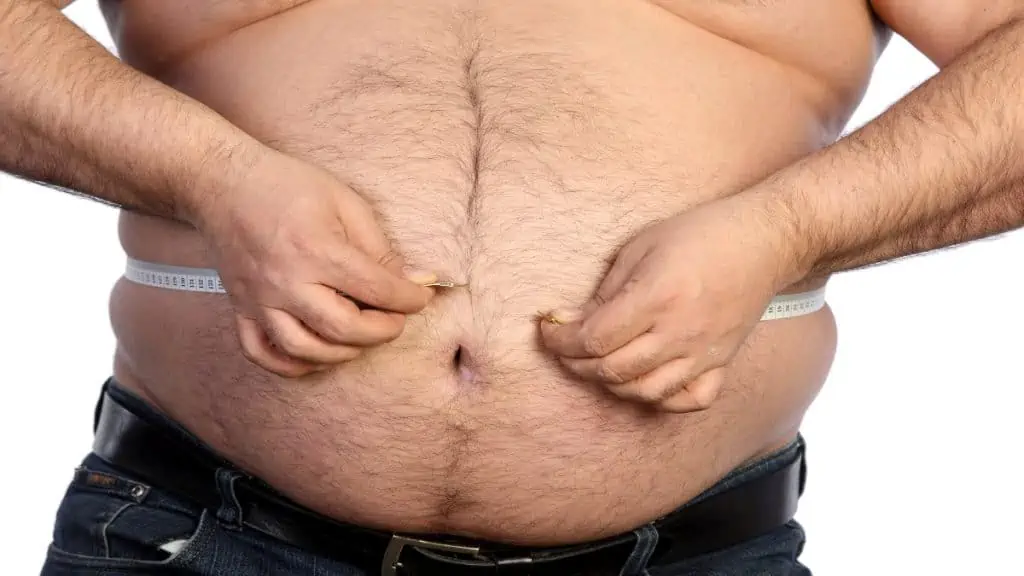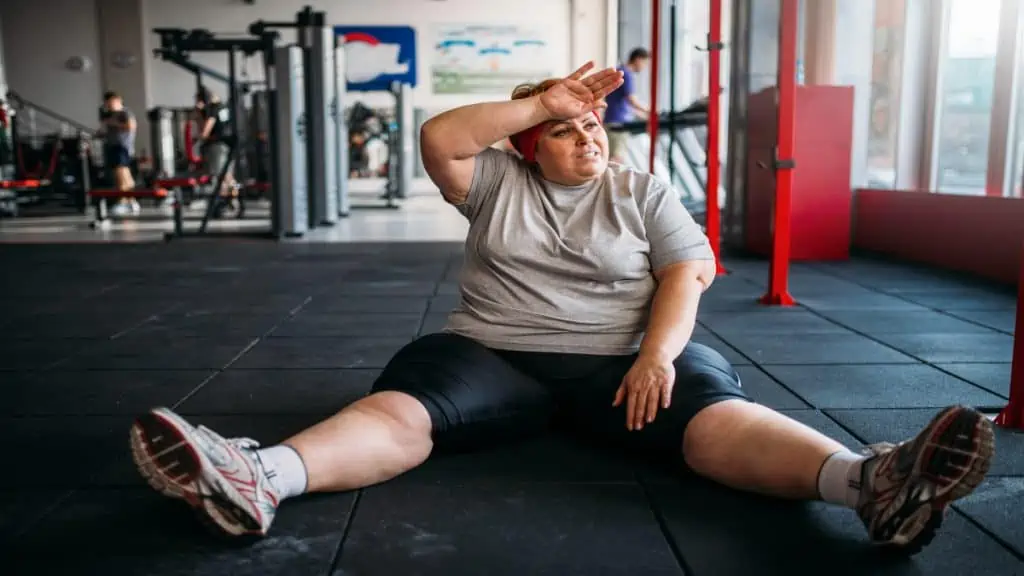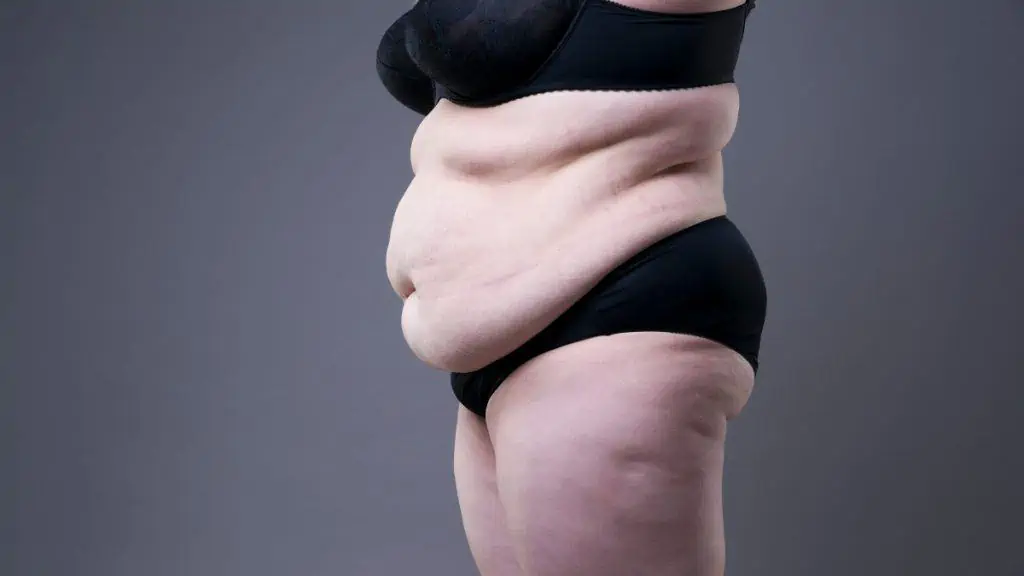55 inches is well above the average UK waist size (and that of the US). As such, if you have a 55 inch waist, then you’re almost certainly putting your long-term health in jeopardy while also sacrificing your quality of life in the short term.
Of course, people gain weight for a variety of reasons. However, when equipped with the right knowledge and armed with enough motivation, virtually anyone can slim their 55 in waist and improve their health significantly.
More Common Waist Measurements:
- 50 inch waist
- 51 inch waist
- 52 inch waist
- 53 inch waist
- 54 inch waist
- 56 inch waist
- 57 inch waist
- 58 inch waist
- 59 inch waist
How does having a 55 inch waist affect your health?

There’s a lot of talk about the dangers of having a high BMI—and rightly so. Having an excessively high BMI, after all, is often an indicator of obesity.
However, one study that examined the relationship between obesity and mortality in men found that BMI didn’t predict a man’s risk of cardiovascular disease, cancer, or mortality. However, the authors of the study did find a strong link between waist circumference and cardiovascular disease. [1]
So considering that a 55″ waist is 15 inches bigger than average—and that the average is already too big—having a 55 in waist is likely to be very damaging to your long-term health.
In women, research shows that having a high waist-to-hip ratio is a strong predictor of mortality from cancer, coronary heart disease, and cardiovascular disease. [2] So regardless of whether you’re a man or a woman, it’s time to take action and slim your 55 inch waistline.
What actually causes people to have a 55 in waist?

While genetics can certainly play a role in fat storage, they’re almost certainly not the sole cause of abdominal obesity.
In more primitive cultures, for example, people simply don’t have access to the fattening foods that are necessary to become obese.
Yet, in other countries, high-calorie food is readily available and has been for decades. This shift in consumption may well explain why people are getting larger. [3]
Yet, modern cities have plenty of fitness facilities, and you can easily order gym equipment to your home from online stores. So perhaps it’s unfair to blame the food industry for its increase in production?
One thing’s for sure; if you overconsume calorie-dense foods, then you’re very likely to gain weight unless you burn it off.
How can you safely reduce your 55 inch waist?

We all know that junk food tastes good—that’s why many of us keep going back for more.
Yet, if you spend even just an hour with a cookbook, you’ll discover all kinds of delicious, low-calorie recipes that will nourish your body and keep cravings at bay.
Cooking from scratch might not be possible for everyone all the time, but when you cook your own meals, you’re able to customize the macronutrient and micronutrient content—the proteins, fats, carbs, fiber, vitamins, and minerals—to suit your needs.
In terms of macros, protein is often said to be the most satiating nutrient, so make sure to eat lean meats, fish, yogurt, and beans throughout the week.
Carbs can definitely fuel your workouts—which you should ideally be performing at least 3 times per week—but can also provoke cravings for calorie-dense junk foods.
Fats are necessary for optimal hormonal health, and you can get them from oily fish, eggs, dairy, nuts, and avocado, to name just a few tasty and nutritious fat sources.
Conclusion: Practical advice on slimming your 55 inch waistline

While reducing your calorie intake will definitely get the weight loss ball rolling, you need to exercise as well if you want to do everything in your power to slim your 55 inch waist.
Ideally, you should go for a walk every day so that you can keep your body supple and improve your digestion (walking has many other benefits too, including improving your mood).
Additionally, you should work your way up to performing high-intensity workouts, which you can easily do at home with minimal or no equipment. Short and intense workouts are easy to schedule, and they burn a ton of calories. You can do drills like burpees and jumping jacks—pair them together, one after the other, for greater intensity—while you watch TV if you like.
References
- Baik, I. (2000). Adiposity and Mortality in Men. American Journal of Epidemiology, 152(3), 264–271. https://doi.org/10.1093/aje/152.3.264
- Folsom, A. R., Kushi, L. H., Anderson, K. E., Mink, P. J., Olson, J. E., Hong, C. P., Sellers, T. A., Lazovich, D., & Prineas, R. J. (2000). Associations of General and Abdominal Obesity With Multiple Health Outcomes in Older Women. Archives of Internal Medicine, 160(14), 2117. https://doi.org/10.1001/archinte.160.14.2117
- Weintraub, K. U. T. (2021, September 14). More exercise, fewer calories? Weight loss is more complicated than that. USA TODAY. https://eu.usatoday.com/story/news/health/2021/09/13/fewer-calories-more-exercise-weight-loss-its-more-complicated/8274034002/

